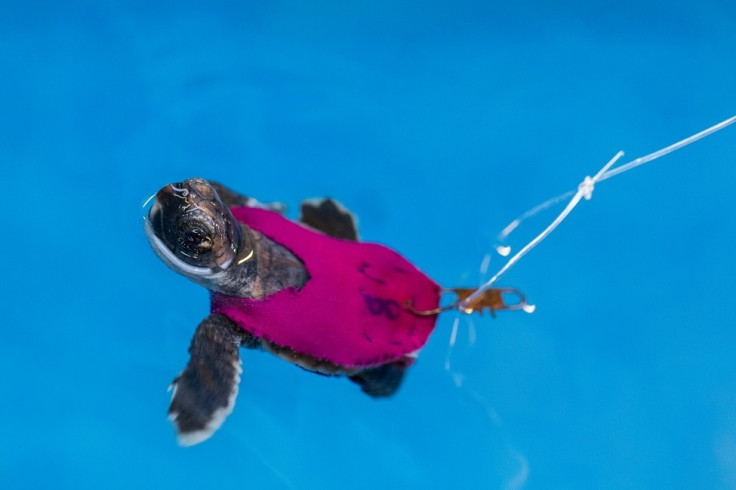Watch: Rare video shows baby sea turtle running on a tiny treadmill
The video was created as part of an effort to understand the endurance of these young creatures.

A cute new video from a group of researchers shows how a baby sea turtle runs on a tiny treadmill.
Going for a quick run is no big deal, but when we see an endangered reptile doing the hard work it is time to sit up and take notice.
The 42-second video taken by Florida Atlantic University researchers shows the stamina of the hatchling, which works out non-stop.
The adorable video was created as part of an effort to understand the endurance these young creatures.
A newborn sea turtle has to sprint towards ocean waters from its nest. Usually, this takes a few minutes, but on some occasions, the baby reptiles get disoriented by excess lighting from the nearshore buildings and streets – a scenario which leads them towards the land where they may end up being eaten by predators or run over by roadway traffic.
The only way out for these creatures is to make it to the ocean somehow and swim away, which – after hours of crawling – can put their stamina to test.
"What prompted our study was the desire to understand what happens to these hatchlings after they spend hours crawling on the beach because they are disoriented," study lead Sarah Milton said in a statement.
"We wanted to know if they would even be able to swim after crawling 500 metres or more, which could take them as long as seven hours to complete."
Milton and her students collected as many as 150 loggerhead and green sea turtles and studied their energy levels – breathing, stroke rate, and other marks – as they crawled on tiny enclosed treadmills under lighting conditions similar to that of urban beaches. Then, they were allowed to swim in a small tank using a specially designed swimsuit.
Comparing the results with similar field tests, the researchers found that in both cases, the creatures displayed incredible physical strength that enables them to crawl for hours.
"We were completely surprised by the results of this study," said Milton. "We were expecting that the hatchlings would be really tired from the extended crawling and that they would not be able to swim well. It turned out not to be the case and that they are in fact crawling machines. They crawl and rest, crawl and rest and that's why they weren't too tired to swim."
Though extended energy levels are a sign of safety, the researchers have warned that it could lead them to dangerous zones, something that still remains to be dealt with.
The study has been published in the Journal of Experimental Biology.





















